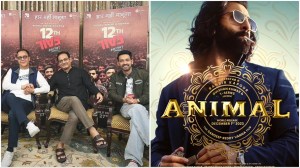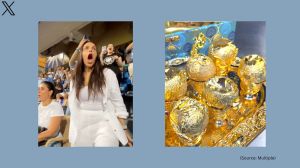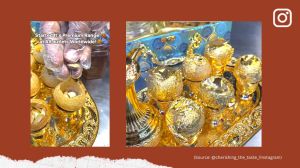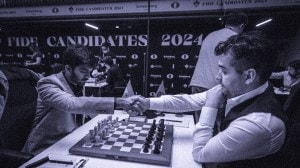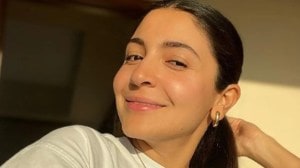- India
- International
‘When I make a work, I tap into the things that I don’t see’: Bharti Kher
The artist, 52, on her latest exhibition in Delhi, the inherited histories of objects and being a chronicler of the future
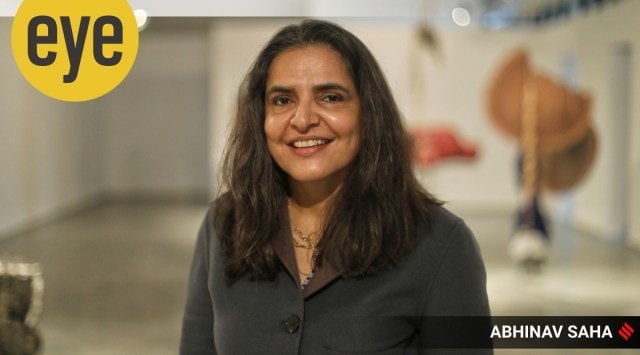 Bharti Kher (Express photo by Abhinav Saha)
Bharti Kher (Express photo by Abhinav Saha)The title of your current exhibition ‘Strange Attractors’ (at Nature Morte gallery, Delhi, till February 6) refers to a mathematical concept within the Chaos Theory. In 2020, your New York exhibition was titled ‘The Unexpected Freedom of Chaos’. Is it also influenced by the chaos around?
In the past 20 years or so, there has been a more sustained and accessible crossover between physics, other sciences, say astronomy, creative thinking and the arts. There are theories about the universe being a single organism, across the spaces of theology, philosophy, poetry and astronomy. As an artist, I have always been keen to talk about the ephemeral. When I make a work, I am trying to tap into the things that I don’t see. When I was around eight, my art teacher taught me how to see the space around an object and how it defined the very object itself. That fundamentally changed my way of looking at the world and at art. My work is about all the things I am interested in as a person. It is about the unity of opposites and this inherent contradiction.
You have often used the technique of body casting in your work. This exhibition has Pieta (2018), which is a cast of your mother. In Six Women (2013-15) you cast sex workers from Sonagachi.
I have been doing castings in plaster for more than two decades. They carry something of another dimension and add an essence of the real person into the imaginary work. When the plaster heats up, it opens the pores of the skin and captures something about a person that perhaps they don’t even want to share with me. Can a body carry many narratives, even the ones that don’t belong to it, like that of your ancestors?
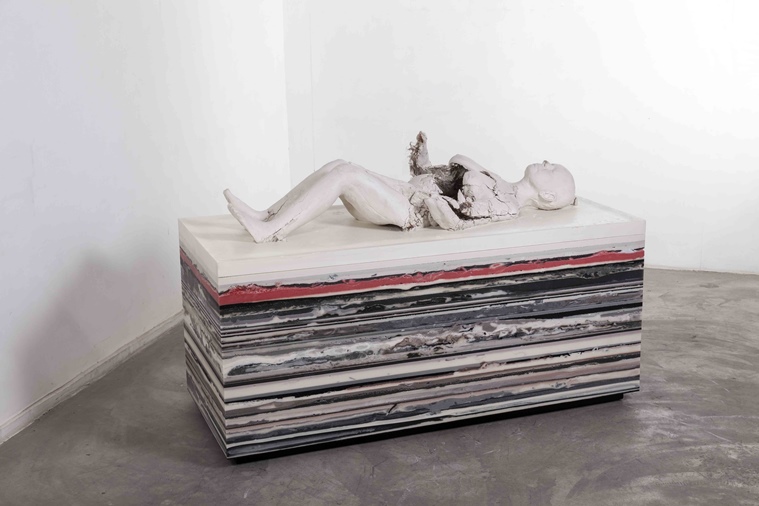 Pieta, 2018, Plaster, wax, 69 x 30 x 30 in | 175.3 x 76.2 x 76.2 cm (Courtesy of the artist and Nature Morte)
Pieta, 2018, Plaster, wax, 69 x 30 x 30 in | 175.3 x 76.2 x 76.2 cm (Courtesy of the artist and Nature Morte)
When I was casting the sex workers, I was aware of the difference between empathy and exploitation. What did it mean for me, as a woman, to pay them for casting their bodies? The women said exactly the same thing that my mother did after seeing their own cast – ‘It’s just a body’. We are often so critical of our bodies as women but in the cast, we are more forgiving because there is a transition of reality and you see yourself in flesh, so to speak, as much more than just your form.

I believe the mannequins you use are similar to what your mother had at her textile store in the UK.
My father was a textile merchant and my mother had her own textile shop, so I grew up with an understanding and love of textiles. Some years ago, I saw mannequins at a studio of an artist friend in Bengaluru and asked him for them. They reminded me of the mannequins my mother used at her shop in the ’70s – fantastically painted, voluptuous with small waists. Women’s imagery looked like that then. The body has changed a lot now, and it is interesting that the perspective of how the body is supposed to look also changes with time. The mannequins were in my studio for a few years before I decided to begin to recast them in resin and plaster and transform them.
You also work a lot with found objects. When you first came to Delhi in the ’90s, I believe you set out to discover the city through its markets.
If you want to know a new place, walk the streets. Old Delhi was and is still my favourite. I used to go to Chor Bazar a lot and still have much of what I bought from there during those early days, including ceramic eyes, papier-mache sculptures, wooden artefacts and an old catalogues of calendar art. My first bindi supplier is also in Sadar Bazar.
 Cloak for MM, 2018, Sari, resin, metal, 80 3/4 x 36 1/4 x 36 1/4 in | 205 x 92 x 92 cm (Courtesy of the artist and Nature Morte)
Cloak for MM, 2018, Sari, resin, metal, 80 3/4 x 36 1/4 x 36 1/4 in | 205 x 92 x 92 cm (Courtesy of the artist and Nature Morte)
I feel objects are animate like us. They have inherited histories. I’m interested in pushing them towards a new space, forging deeper into the mysteries of familiar things and transforming into their new selves. I like to think when I change an object, I sometimes rid it of its past. When I am casting, I like to tell people you can leave what you want in this room today – it is like a catharsis. Art, in many ways, is a manifestation of ideas, truth, fiction, transformation of objects coming together to create a happening. In this exhibition, Cloak for MM is a homage to my friend Mrinalini Mukherjee. She was a great artist and a collector and wearer of the most fantastic textiles, and these are her saris that I have used. The sense here is that the body is cloaked, she could become invisible and also reappear at will. It’s also a shroud.
In 2010, you started a 30-year project called The Virus Series, where you decided to make one bindi work each year with a text that recorded your observations and predictions. What prompted the project?
The series is an amalgamation of many interests that I have and works that I make in the studio. At first, I had envisioned it as a single piece that was shown in 2008. I realised that the work had potential as a vortex, a space to enter my world that’s different from what you know and from the outside world. I started developing the work further and writing the text, which changes every year. It performs like a timeline that marks events and possibilities for this planet earth. It refers to space research, science, current affairs, politics, and events that mark our lives and at the end of each paragraph, I add my age to mark the work in time. I’ve shown 11 works so far.
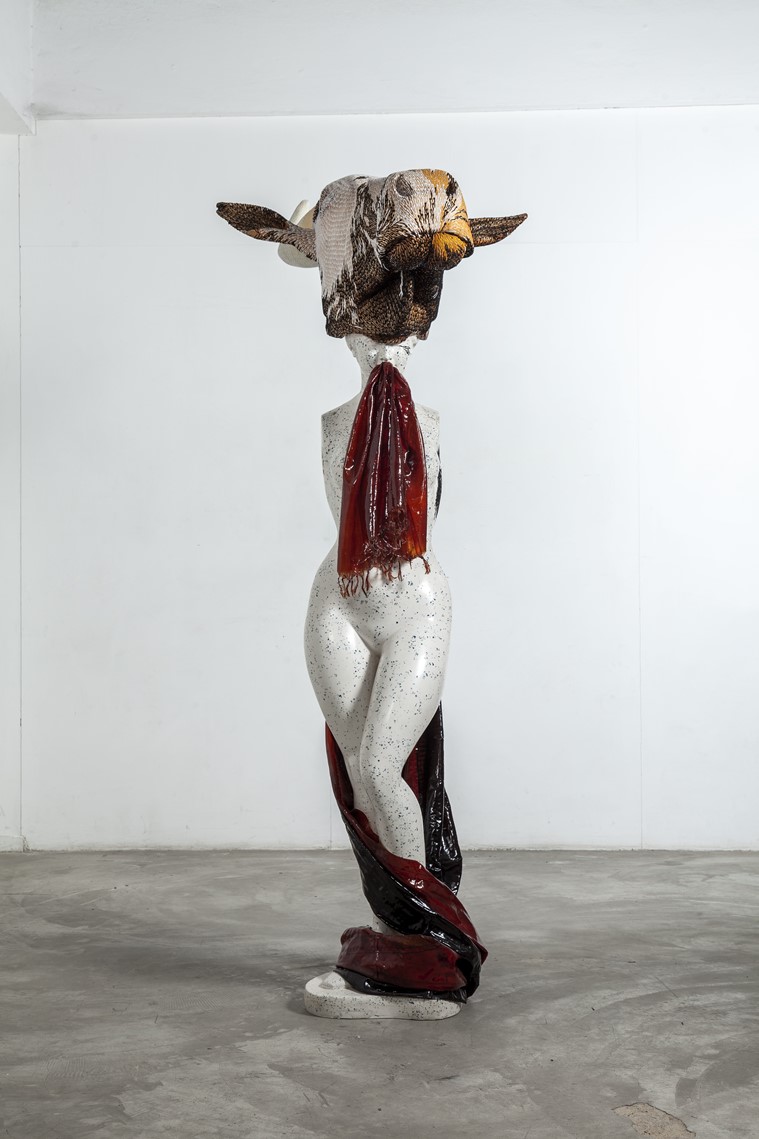 Animus Mundi, 2018, Sari, resin, metal, 80 1/4 x 32 1/4 x 54 in | 204 x 82 x 137 cm (Courtesy of the artist and Nature Morte)
Animus Mundi, 2018, Sari, resin, metal, 80 1/4 x 32 1/4 x 54 in | 204 x 82 x 137 cm (Courtesy of the artist and Nature Morte)
I started when I was 40, and thought 30 years is a good span, until I’m 70. A timeline gives it closure. Part of the text for Virus XII, 2021, says, “Male birth control pills will be made available, making this the most significant contraceptive for men, since the condom. New hybrid fully autonomous flying cars will be seen in the skies, avoiding traffic congestion on the roads.” Some of my predictions have been absurdly wrong and some are quite accurate. Virus 2022 will be shown at the Arnolfini gallery in Bristol, the UK.
Over the years, the bindi has emerged as your pigment. If you could talk about the medium. Also, particularly in reference to the ‘Atlas’ series.
I am pretty fluid in my working methods and the bindi now has become an element of one material. It has evolved as a code, a language I have invented. It is a symbol of consciousness which can be a physical representation of a person’s third, inner eye, and it also carries feminist readings. I continue to develop this further.
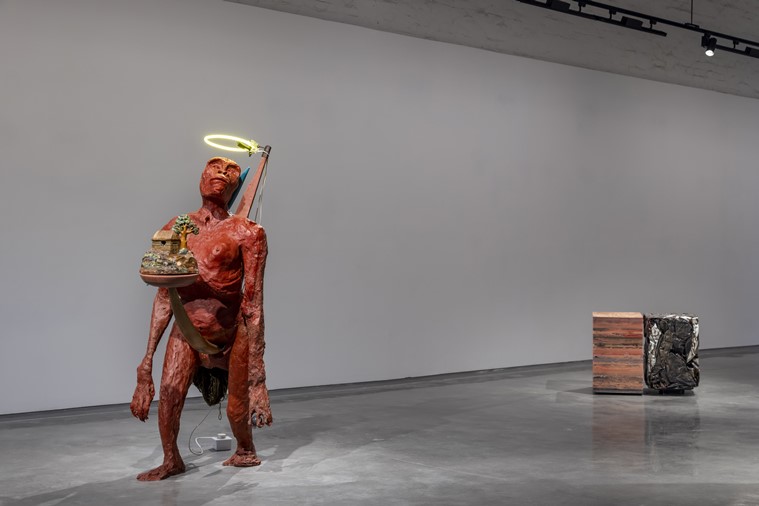 Strange Attractor, 2021, Fibre, wood, wool, light, 42 x 28 x 68 in | 106.6 x 71.1 x 172.7 cm (Courtesy of the artist and Nature Morte)
Strange Attractor, 2021, Fibre, wood, wool, light, 42 x 28 x 68 in | 106.6 x 71.1 x 172.7 cm (Courtesy of the artist and Nature Morte)
On the maps, I use the bindis to build connections, depict our journeys, inner and outer and physical movement. The maps themselves say so much. Some years back, I managed to get three editions of The Larousse Atlas at a second-hand store in France. Published in 1947, the introduction predicted how the hegemony of Europe will change by the end of the century and we will see a shift of power to the East. I used these maps as the base for new works, where the maps are entries into the space of losing yourself as they go nowhere and everywhere… The bindis mark human positions and remnants of memory. I use them to obfuscate historic visualizations of the world, questioning pre-existing notions of belonging, collapsing borders and thinking about the context of the earth as a small dot in the universe.
If you could talk about the origins of the ‘Intermediaries series’ of hybrid sculptures made with golu dolls.
Hybridity in my works have been a part of my language since my early years in college, where my paintings were all about hybrid beings, half man-half horse, and so on. In 2003, I started making a series of works called the Hybrid Series, right after my daughter was born. These five digital photographs were a precursor to many of the later hybrid goddesses I made. They really pushed the possibilities of the body by allowing the figure to be greater than themselves. The women are vulnerable in some ways but also fantastical, powerful and surreal.
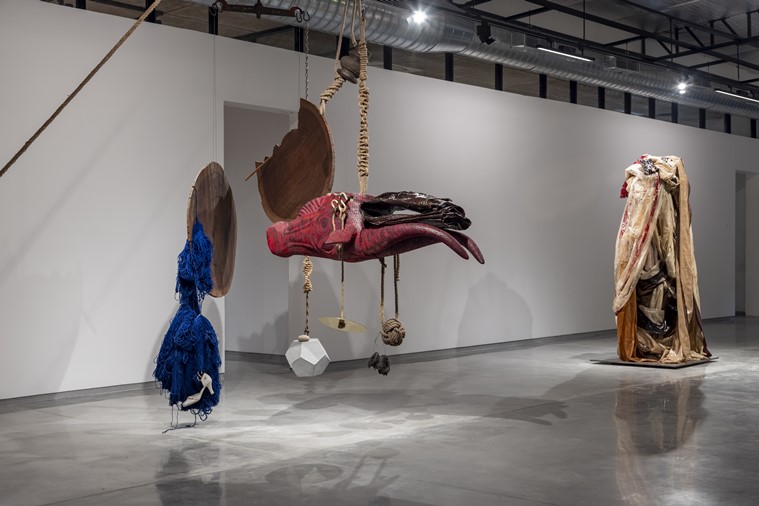 A natural unity of opposites, 2021, Mixed media, Dimensions variable (Courtesy of the artist and Nature Morte)
A natural unity of opposites, 2021, Mixed media, Dimensions variable (Courtesy of the artist and Nature Morte)
The ‘Intermediaries Series’ began when I came across the clay forms in South India. They came to my studio in a massive crate after a year of collecting, but most were broken on the way. At first, I thought it was a terrible waste but suddenly it seemed fantastic. I started reattaching parts to each other and then breaking them in halves and joining them together, creating possibilities of half and half. They are fluid, not gendered and indistinct in terms of identity. I made hundreds of them over a few years, some of which I rejected. I showed 20 works at the show in New York in 2020 and a few I have developed into monumental bronzes, which have been exhibited in numerous countries. The Intermediary Family was at Frieze in 2018, and Harvard in 2019. The Fallow is currently being exhibited in Chichester and I am making the most ambitious piece now: an 18 ft bronze work that will be outside Central Park, New York, in September 2022 curated by Daniel Palmer and The Public Art Fund. The work is called Ancestor.
Apr 16: Latest News
- 01
- 02
- 03
- 04
- 05


















